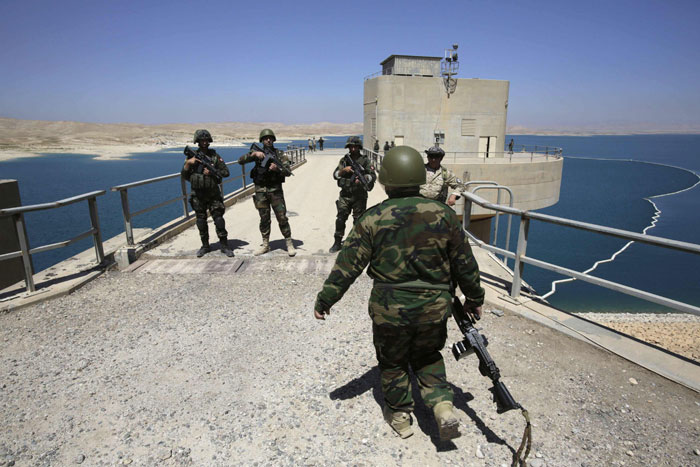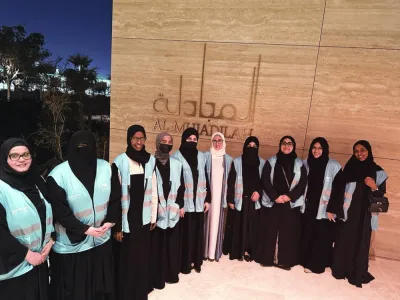Peshmerga fighters stand guard at Mosul Dam in northern Iraq. Islamic State insurgents wrested control of the dam from Kurdish forces in recent weeks. While Iraqi and Kurdish forces recaptured the dam with the help of US air strikes on Monday, the dam still has the potential for catastrophe.
AFP
Shia militiamen gunned down 70 people in an apparent revenge attack at an Iraqi Sunni mosque on Friday, dealing a blow to government efforts to regain territory seized by jihadist-led militants.
The shooting in the Hamreen area of Diyala province will increase already significant anger among Iraq's Sunni Arab minority with the Shia-led government, undermining an anti-militant drive that ultimately requires Sunni co-operation to succeed.
It came as government forces battled to regain ground in Diyala, and Washington warned of the dangers of the Islamic State (IS) jihadist group, which spearheaded an offensive that overran swathes of Iraq in June, and this week released a video of American journalist James Foley being beheaded.
Army and police officers said the attack on the Musab bin Omair Mosque came after Shia militiamen were killed in clashes in the area, while other sources said it followed a roadside bomb near one of their patrols.
Doctors and the officers put the toll from the attack, in which worshippers were sprayed with machinegun fire, at 70 dead and 20 wounded.
The government turned to militiamen to bolster its flagging forces during the IS offensive, sparking a resurgence of groups involved in brutal sectarian killings in past years that will be difficult to dislodge.
Elsewhere in Diyala, Kurdish and federal security forces on Friday launched an operation aimed at retaking the Jalawla area from militants who seized it on August 11.
Federal forces backed by air support also clashed with militants in the Saadiyah area south of Jalawla, officers said.
Pentagon chiefs, meanwhile, warned of the dangers of IS and said operations against it in Syria may be needed, as the West reeled from Foley's grisly killing.
"They marry ideology and a sophistication of strategic and tactical military prowess," US Defence Secretary Chuck Hagel said of the "barbaric" militants.
"They are tremendously well funded. This is beyond anything we have seen."
General Martin Dempsey, chairman of the Joint Chiefs of Staff, said the group "has an apocalyptic end of days strategic vision that will eventually have to be defeated".
Dempsey warned the jihadist vision of a wider Muslim caliphate could "fundamentally alter the face of the Middle East and create a security environment that would certainly threaten us in many ways".
The US military said it had conducted 90 air strikes in Iraq since August 8, more than half in support of Kurdish forces near the country's largest dam on the Tigris river north of militant-held second city Mosul.
Foley's killing has stoked Western fears that the territory the militants have seized in Syria and northern Iraq could become a launchpad for a new round of global terror attacks.
The US State Department said it estimated there were about 12,000 foreign fighters from at least 50 countries in Syria.
In the execution video, released online, a black-clad militant said Foley was killed to avenge US air strikes against IS.
The man, speaking with a clear south London accent, paraded a second US reporter, Steven Sotloff, in front of the camera and said he too would die unless President Barack Obama changes course.
Sotloff is a freelance journalist for Time magazine who was captured on August 4, 2013.
After overrunning large areas of Iraq in June, the jihadists went back on the offensive earlier this month, attacking mainly Christian and Yazidi Kurdish areas east and west of Mosul, triggering a new exodus of civilians that helped prompt the US air strikes.



